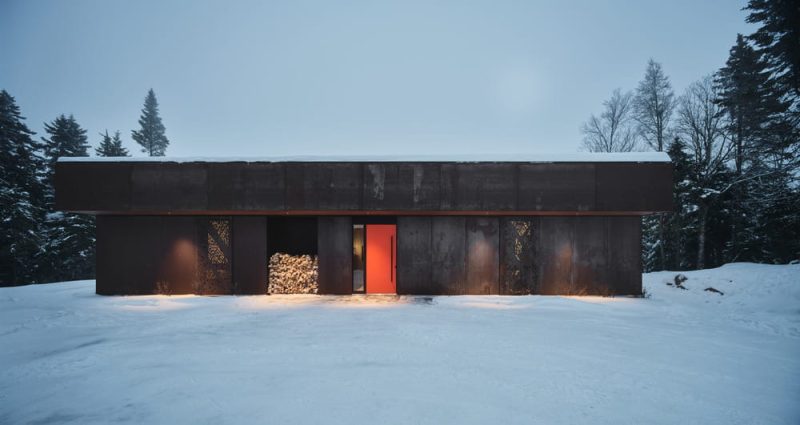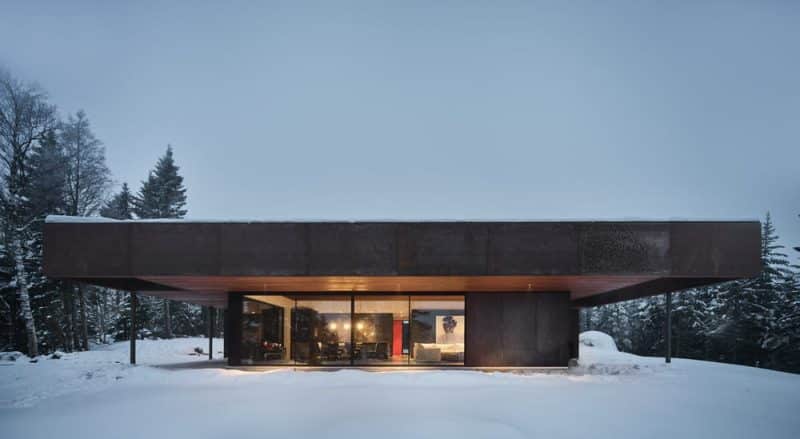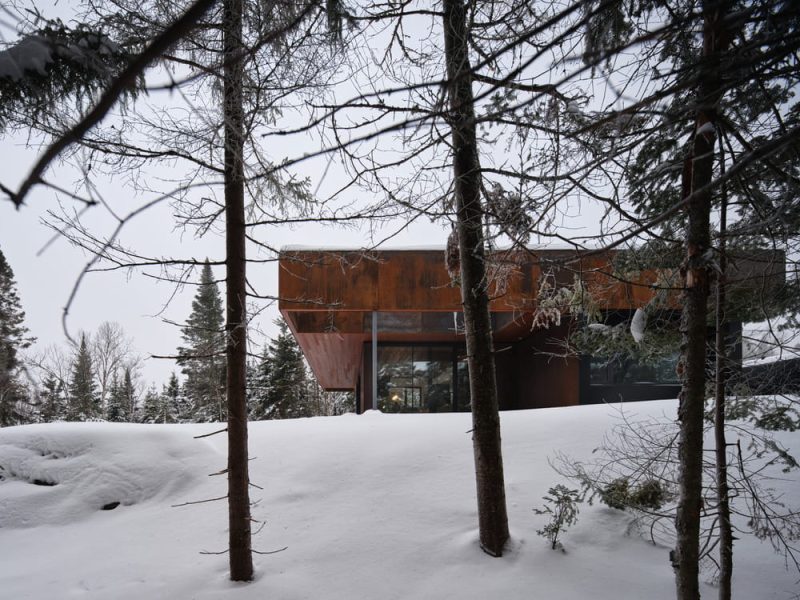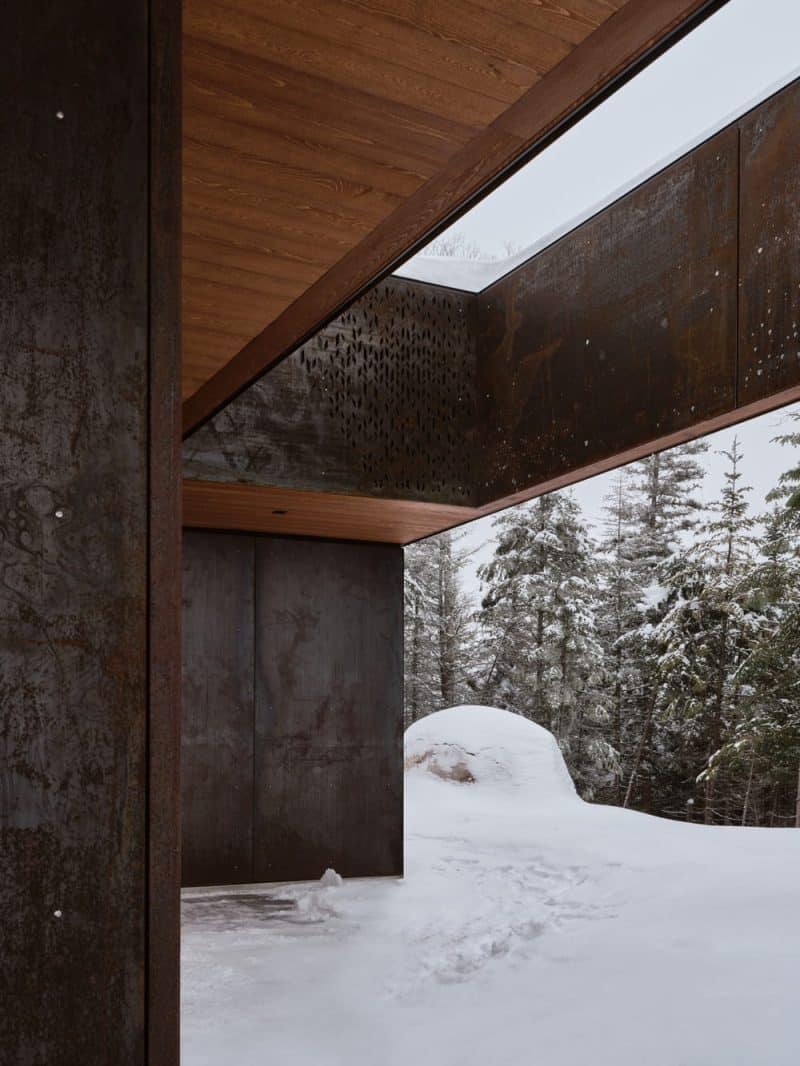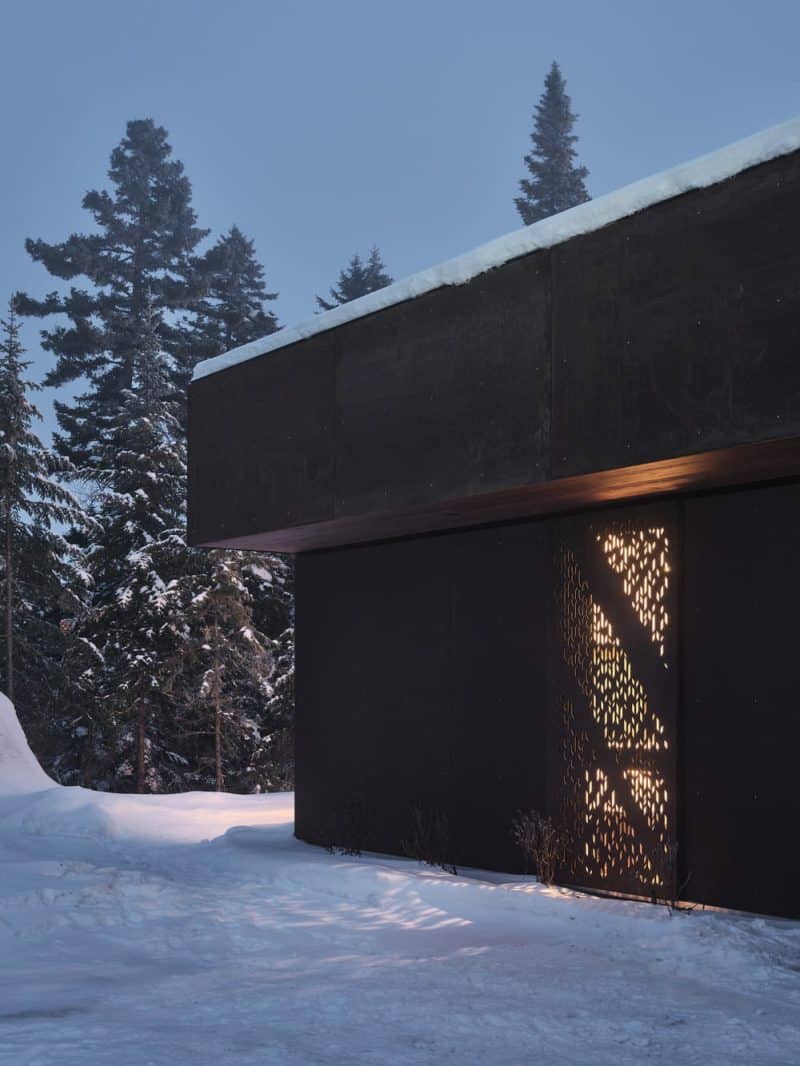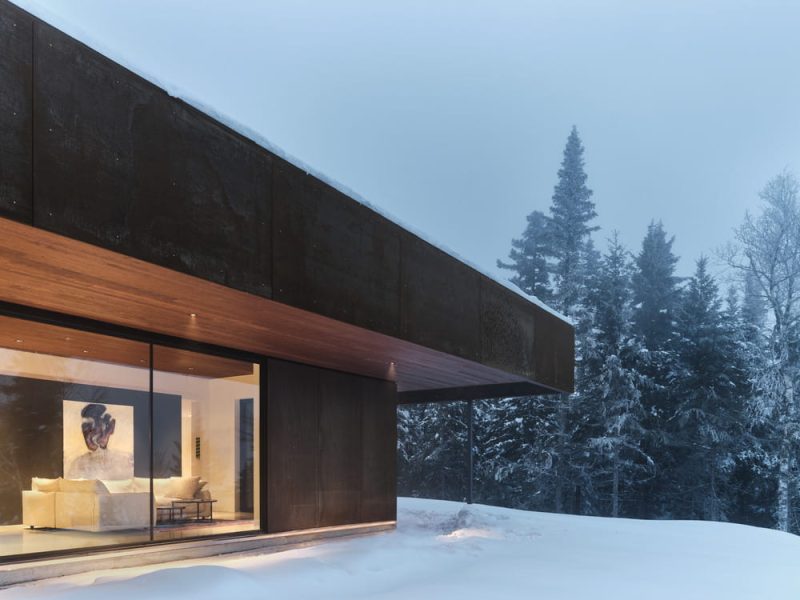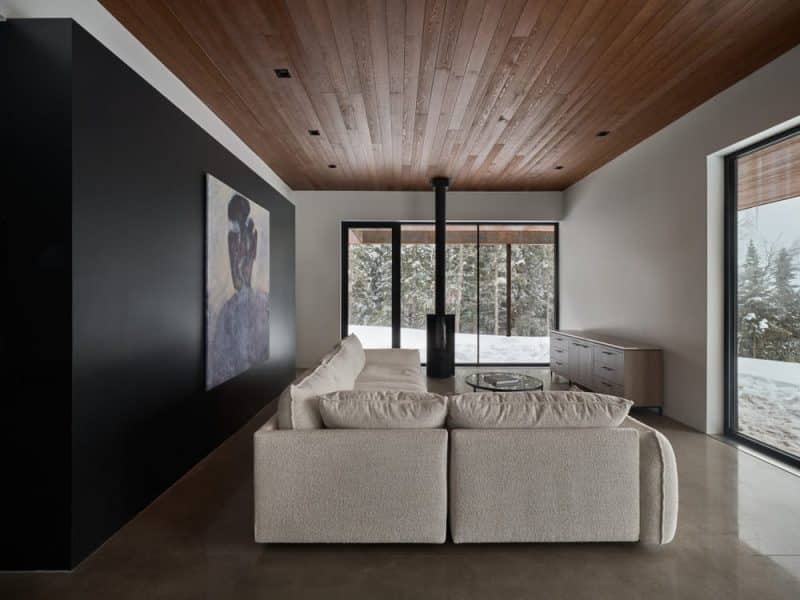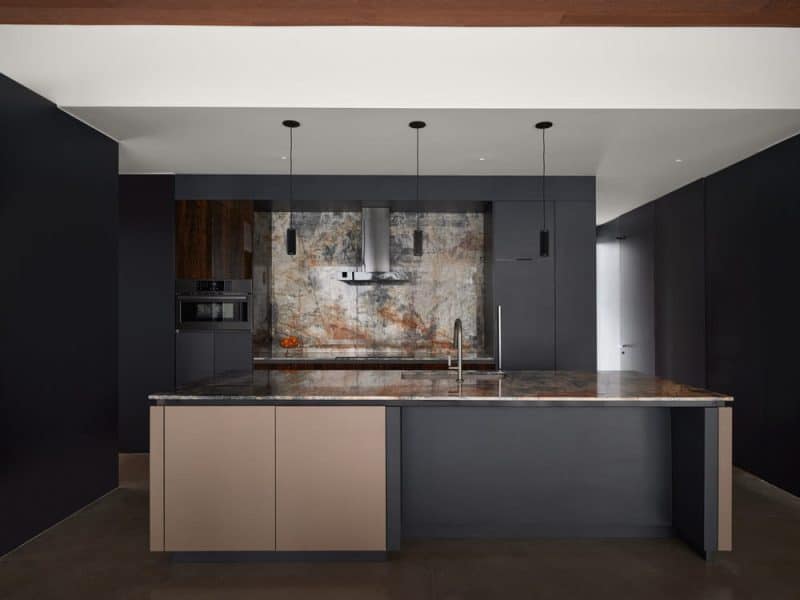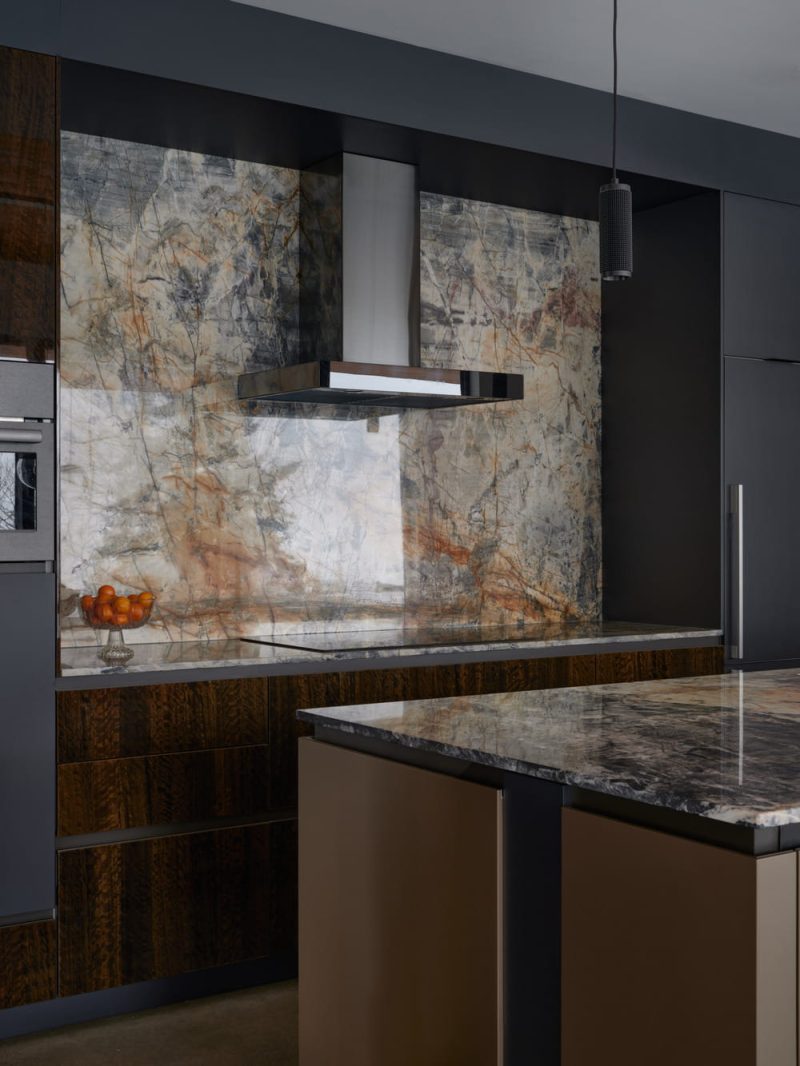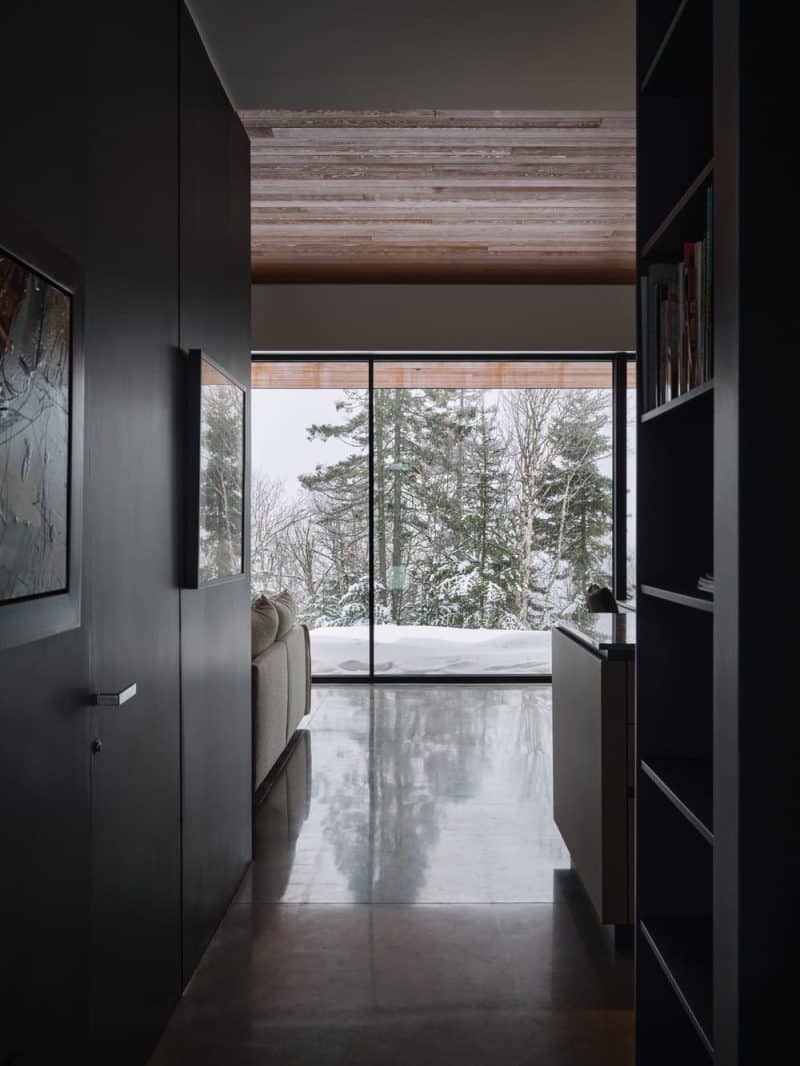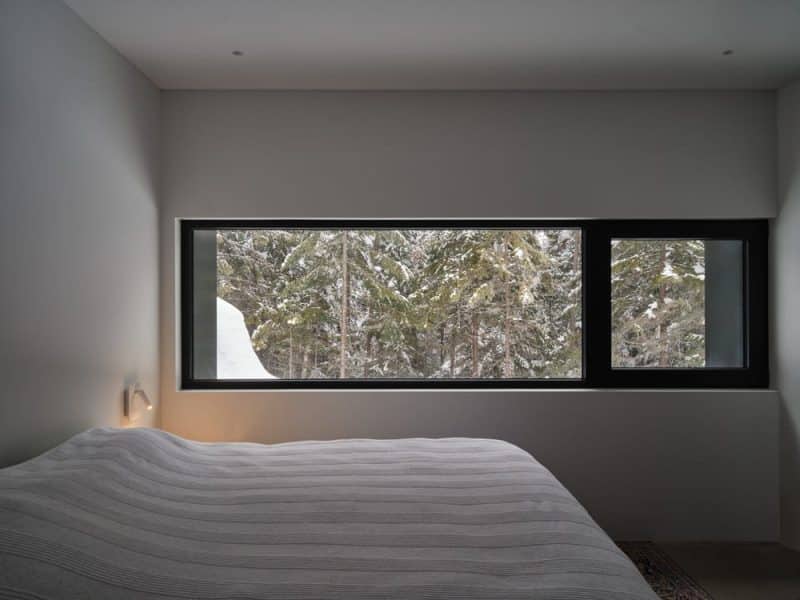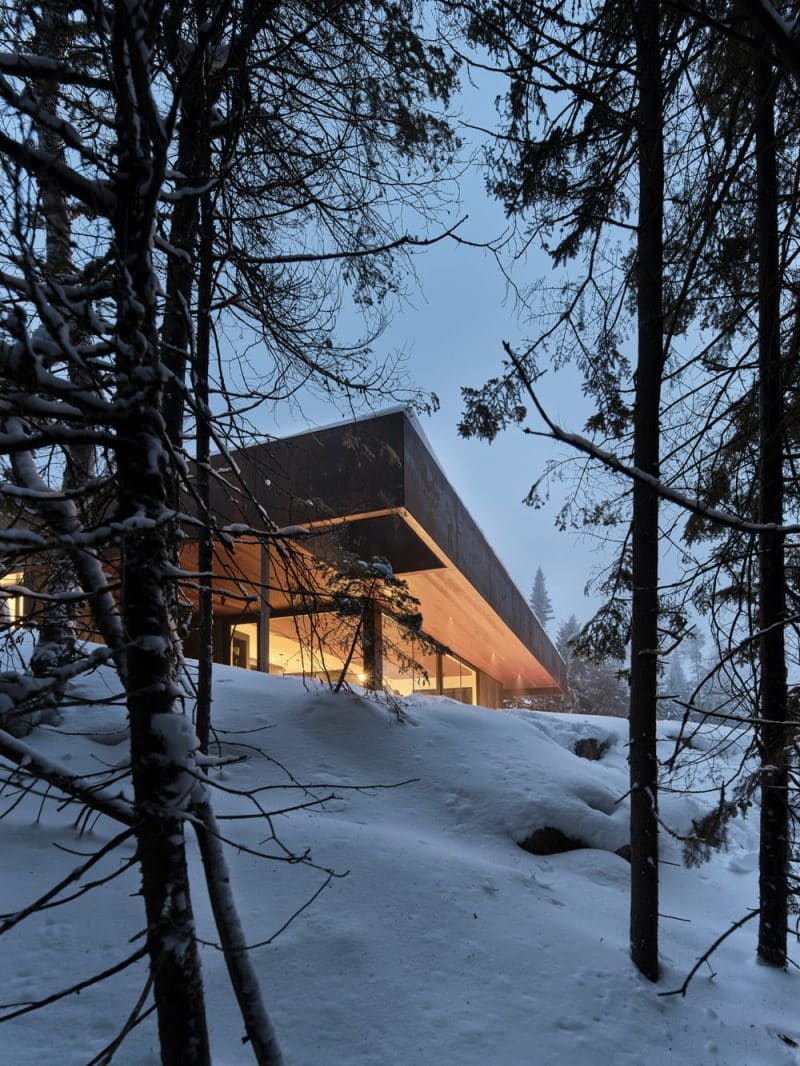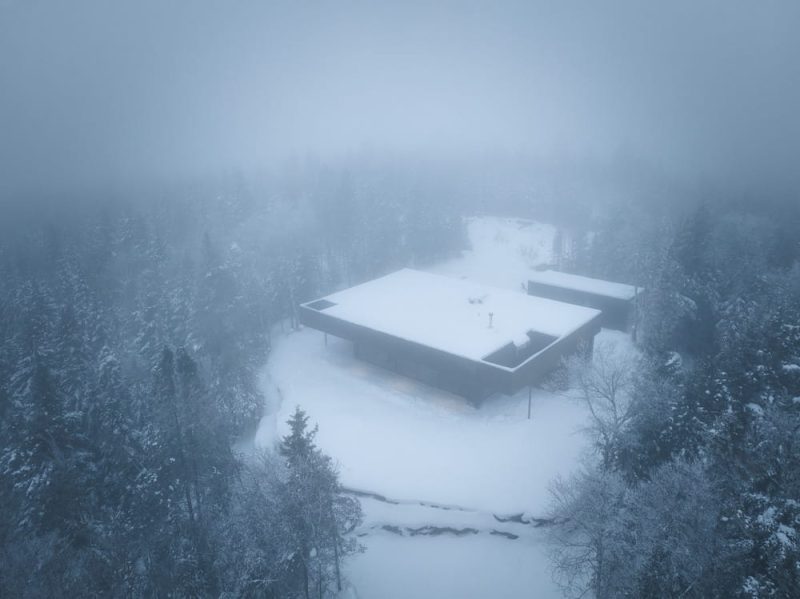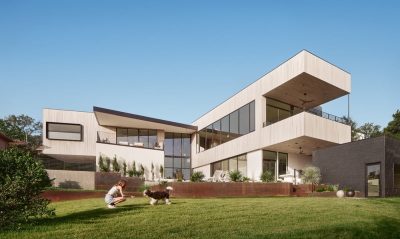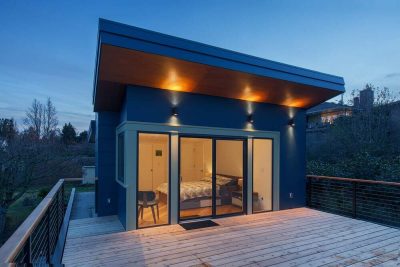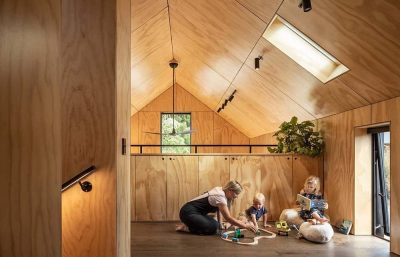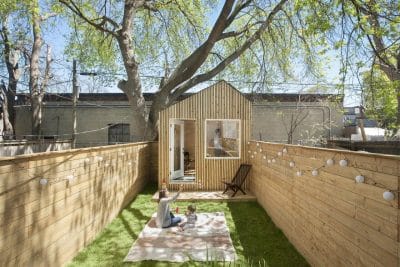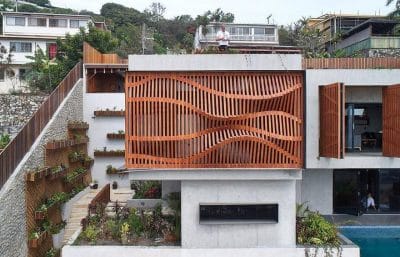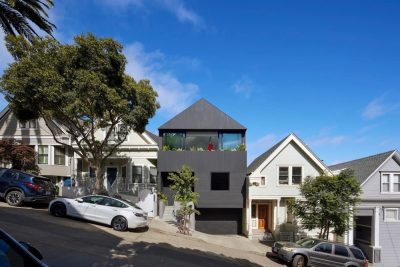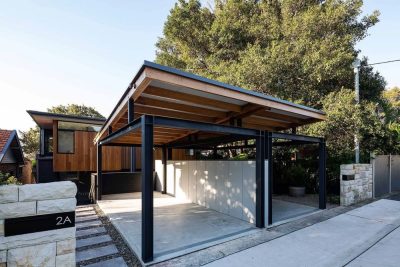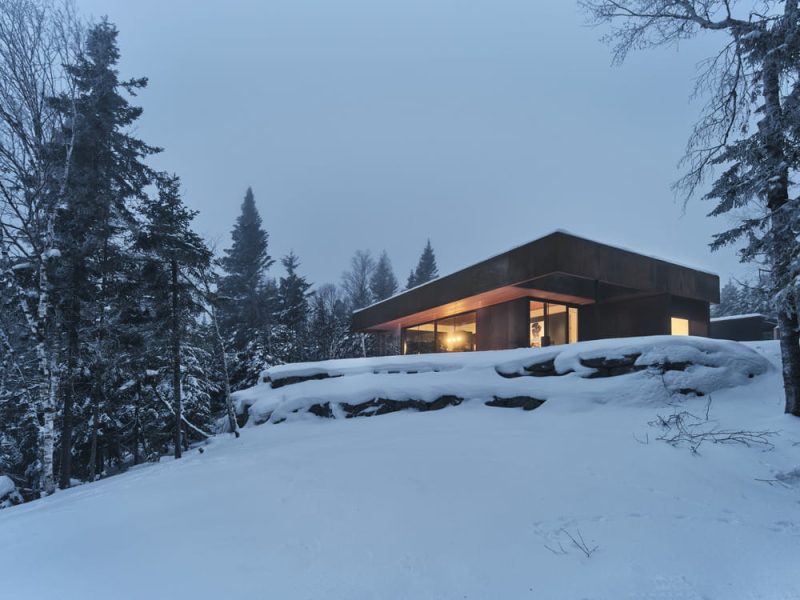
Project: Owl’s Shield House
Architecture: Atelier Schwimmer
Team: Felix Schwimmer, Zeinab El Kheshen, Raid Rached, Marie-Philippe Tétreault
Location: Laurentians, Quebec, Canada
Area: 1500 ft2
Year: 2024
Photo Credits: Phil Bernard
Owl’s Shield House by Atelier Schwimmer offers a serene escape atop a rugged peak on a 500-meter hill. Perched in the midst of a pine forest and a rocky landscape, the modern cabin provides a breathtaking panoramic view of the Laurentian valley. Commissioned by Mr. Blouin and Mrs. Comtois, this retreat focuses on tranquility, durability, and ease of maintenance. Moreover, the design creates both a physical and psychological sanctuary through its refined form, materiality, and spatial composition.
Contextual Integration and Materiality
Initially, the chalet was conceived as a protective shelter within the forest. In response, it deliberately turns its back to the road and prevailing winds, thereby embracing an introspective approach to privacy. Furthermore, a cantilevered roof extends over the large glazed façade; this feature not only mitigates solar gain but also preserves an uninterrupted connection between the interior and the landscape.
Additionally, the architects selected materials with care to ensure longevity and contextual harmony. For example, vertical cladding in weathered steel, soffits and ceilings in white cedar, and a waxed concrete floor collectively foster a tactile dialogue between built and natural environments. Over time, the evolving patina on the steel shifts from a vibrant orange to a deep brown, harmonizing beautifully with the seasonal hues of the surrounding snow, rock, and foliage. Consequently, the structure reinforces its timeless presence while paying homage to its natural context.
Spatial Strategy and Passive Design
Moreover, Owl’s Shield House is organized on a single level to provide long-term accessibility and facilitate both privacy and openness. Notably, the monolithic steel façade creates an intimate seclusion while generous glazed openings introduce ample natural light into the bedrooms and great room. This dynamic interplay between sheltered and open areas heightens the contrast and adds to the overall sense of spatial fluidity.
Furthermore, the design employs passive house principles to ensure excellent thermal efficiency and resilience. The south-facing orientation maximizes solar gain during winter, and an overhang strategically positioned on the façade helps to mitigate summer overheating. In addition, the thermal mass of the concrete floor stores and gradually releases heat, thereby optimizing comfort throughout the day. The highly insulated north façade acts as an effective environmental shield, while an intelligent vapor barrier adapts to hygrothermal variations, thus enhancing the building’s overall performance.
Technical Autonomy and Environmental Considerations
In addition, the chalet incorporates a self-sufficient infrastructure that minimizes its environmental impact. For instance, it features an autonomous water purification system, an artesian well, and a septic tank with a gravity-fed drain field. Moreover, electricity is sourced from the hydroelectric network, which further reduces the ecological footprint of the property.
In conclusion, Owl’s Shield House embodies a nuanced dialogue between architecture and landscape. By thoughtfully integrating materiality, orientation, and form, Atelier Schwimmer has created an enduring, contextually sensitive retreat that values longevity and the evolving beauty of natural materials. Ultimately, this modern cabin not only offers a haven of tranquility but also stands as a testament to a design philosophy that seamlessly blends sustainability with sophisticated aesthetics.
